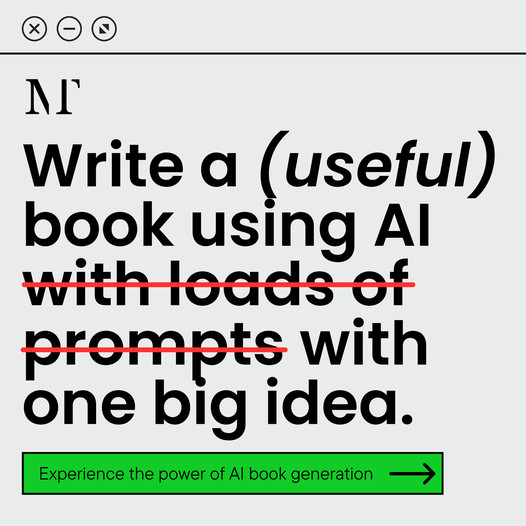TL;DR
The middle portion of a story often presents challenges for writers, leading to a “soggy middle” filled with uninteresting filler and half-finished subplots. To avoid this, it’s crucial to maintain momentum by incorporating shifts in character or plot, ensuring causality between events, and introducing elements like betrayals and revelations. Planning and recognizing when to escalate conflict are essential strategies for keeping the middle engaging and dynamic.
The Challenge of the Middle
Writing the middle section of a story can often feel like navigating a wasteland of meandering plots, uninteresting filler, and half-finished subplots. Many writers struggle with crafting this part of their narratives, leading to what is commonly referred to as a “soggy middle.” In this post, we’ll explore strategies to enhance the middle of your story and ensure it remains engaging for both you as the writer and your audience.
Understanding Momentum
One of the key aspects to consider when writing the middle of your story is momentum. The beginning of a narrative often grips the reader’s attention, while the ending provides a satisfying conclusion. However, the middle section can be where momentum starts to falter. This decline can drag down even the most promising tales, making it crucial to maintain a sense of forward movement.
As a writer, you should ask yourself the following questions while crafting the middle of your story:
- Is this enjoyable to write?
- Is this part of the story exciting?
- How does this build into the larger narrative?
- What new information is the audience receiving?
Addressing these questions can help you avoid filler material that detracts from the story’s flow.
Shifts: The Key to Maintaining Engagement
To keep the middle of the story engaging, it’s essential to introduce shifts—either in character or plot. These shifts can serve as a catalyst for change, redefining the direction of the narrative and keeping the reader invested.
Character Shifts
Character shifts often lead to significant transformations that impact the overall narrative. For example, in the TV show Silo, the character Juliet is nominated as sheriff, which broadens her character arc and enhances the main conflict. This shift not only propels her character forward, but it also alters the audience’s perspective on the story.
Similarly, in the film District 9, the protagonist Vikus undergoes a profound transformation after exposure to alien biotechnology. His shift from a bureaucratic enforcer to a victim of oppression creates a more intimate focus on his personal struggles, keeping the audience engaged through his journey of survival and redemption.
Plot Shifts
Plot shifts can also rejuvenate the narrative, providing fresh perspectives and new conflicts. In the miniseries The Third Day, the transition from the “Summer” episodes to the “Winter” episodes introduces a new protagonist and alters the story’s tone and pace. This structural change reinvigorates the plot, expanding the story’s scope and deepening the audience’s investment.
In Frank Herbert’s Dune, a pivotal plot shift occurs when Paul’s father, the Duke, is killed. This moment not only shifts the focus of the story but also establishes Paul as the new protagonist, allowing for a fresh trajectory in the narrative.
 What Poetry Feels Like
What Poetry Feels LikeCausality: Connecting Events
Another important aspect of maintaining momentum in the middle of your story is ensuring that events are connected by causality rather than mere chronology. This principle emphasizes that events should propel the story forward, creating a sense of rhythm and engagement.
To achieve this, consider the following:
- Ensure that each plot beat is connected by “therefore” or “but” rather than simply “and then.”
- Establish clear cause-and-effect relationships between character decisions and plot developments.
- Introduce unpredictability by tying outcomes to characters’ choices and obstacles.
Conflict and Tension: The Driving Forces
Conflict and tension are vital elements that drive a story forward. However, writers must be cautious not to drag out conflicts unnecessarily or resolve them too early. Striking a balance is crucial for maintaining the audience’s interest.
Building Tension
When building tension, consider the following strategies:
- Gradually escalate conflict to maintain stakes and urgency.
- Introduce new conflicts that are more compelling than those that have been resolved.
- Analyze whether current conflicts are interesting or merely tedious roadblocks.
For example, in The Fellowship of the Ring, the narrative resolves some conflicts, such as Frodo reaching Rivendell. However, Tolkien raises the stakes by revealing Frodo’s new mission to destroy the ring, keeping the tension alive.
Resolving Conflict
Conversely, if a conflict is dragging on, it’s vital to assess its relevance. Avoid repetitive arguments or filler actions that do not progress the plot. Look to media like the TV show The Bear, which resolves conflicts quickly while introducing new threats, thus maintaining momentum throughout the series.
Dynamic Middle: Adding Twists and Revelations
To enhance the middle section of your story, consider introducing twists, betrayals, and revelations. These elements can transform the narrative direction and deepen character relationships, making the middle as engaging as the beginning and end.
Betrayals and Revelations
For instance, in A Song of Ice and Fire, Tyrion’s betrayal by Shae alters his character arc and leads to significant consequences. Similarly, in the film The Menu, a revelation regarding Tyler’s true motives changes the stakes for the protagonist, Margaret, and reinvigorates her determination.
Consider utilizing red herrings and hidden expectations to create surprising twists. This can keep readers on their toes and prevent predictability from dulling the narrative’s edge.
The Importance of Planning
The middle section of a story often suffers from a lack of planning. To avoid a soggy middle, establish key moments and conflicts ahead of time. Identify parts of the story that may slow down and analyze how to infuse them with tension or excitement.
Adding a Middle Pole
Visualize your story as a tent—two poles at either end represent the beginning and end, while a middle pole can prevent sagging by providing a point of focus. This midpoint should introduce a significant event or discovery that propels the story forward, ensuring that the narrative remains dynamic and engaging.
Final Thoughts
In conclusion, writing the middle section of a story can be challenging, but by maintaining momentum, introducing shifts, ensuring causality, and planning carefully, you can create a rich and engaging narrative. Remember to keep the conflict dynamic and consider introducing twists, revelations, and deeper character developments to sustain reader interest.
Have you struggled with writing the middle part of your stories? Or do you find it easier than the beginning or end? Share your thoughts in the comments below!
Original channel: https://www.youtube.com/channel/UC9R_q0yA1n6KpbXtIxcFGtg


 Grab my poetry book, 'we're all just wanderers in the end' Here
Grab my poetry book, 'we're all just wanderers in the end' Here AD: Your Book Finally Written...
AD: Your Book Finally Written...